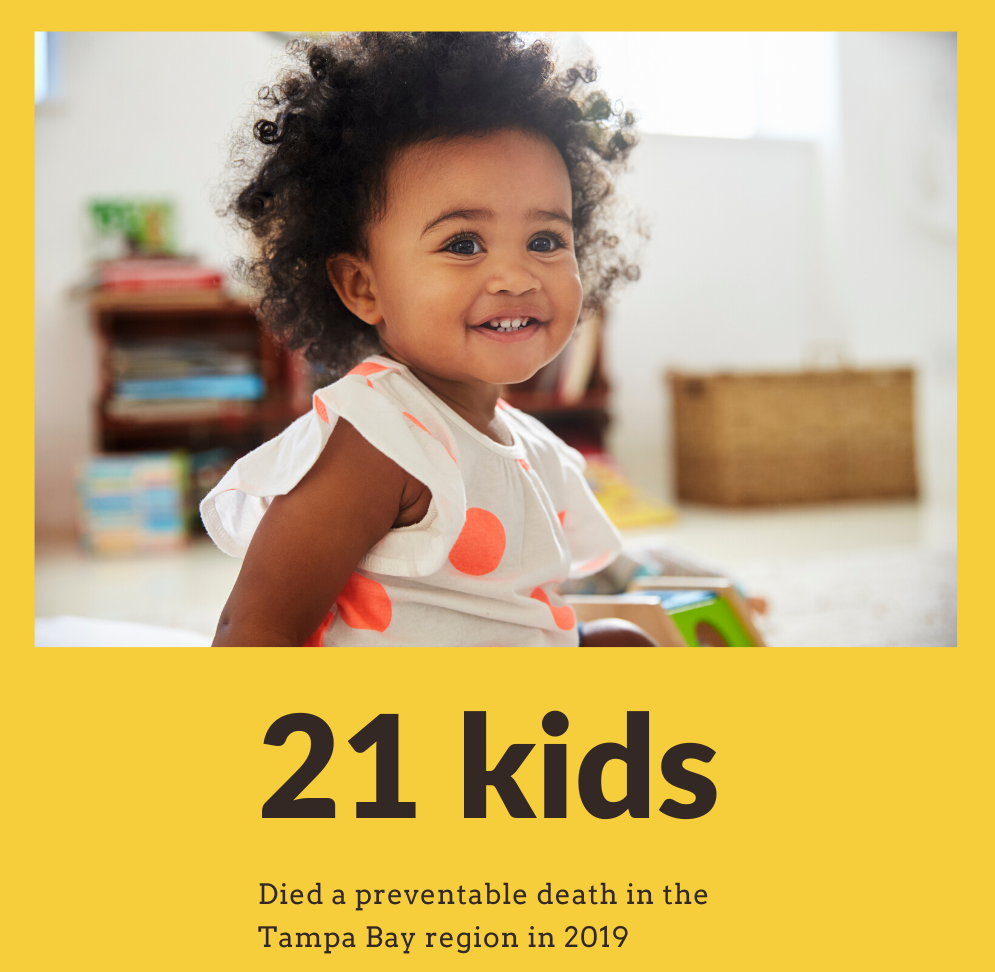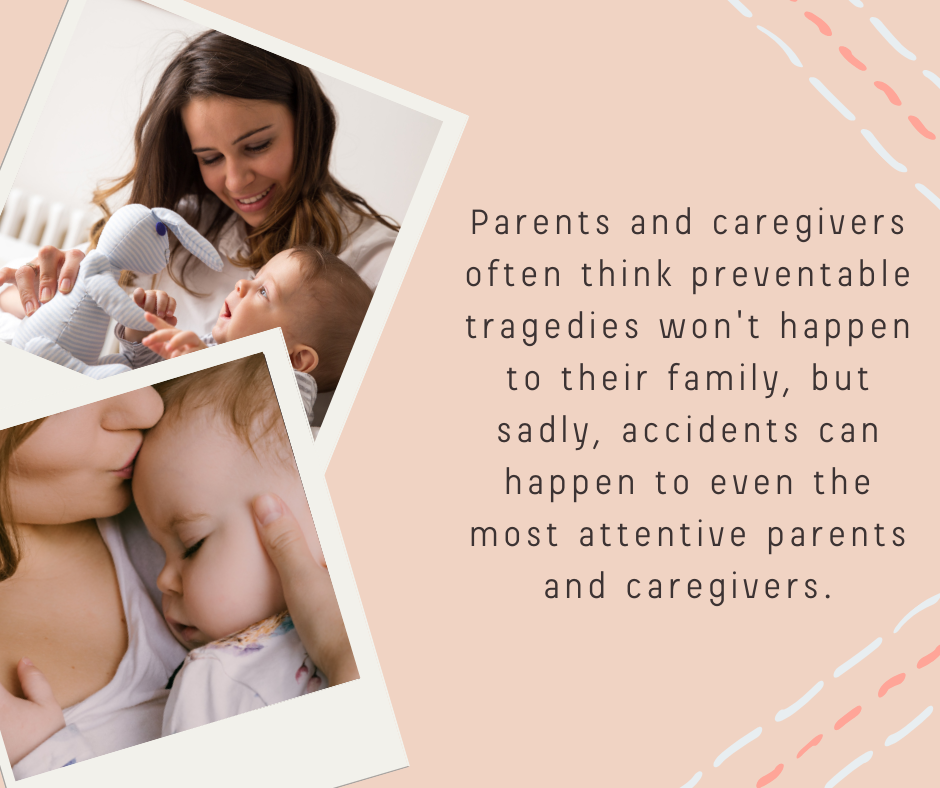
Unsafe sleep is the leading cause of preventable deaths for Tampa Bay children
Unsafe sleep practices, such as co-sleeping, are once again the leading cause of preventable deaths in three Tampa Bay area counties. Last year, 21 children under the age of 5 in the Tampa Bay region died from unsafe sleep – a 100% preventable death.
Unsafe sleep has been the leading cause of preventable deaths in the Tampa Bay area for seven of the past eight years. In 2018, 18 young children drowned in Hillsborough, Pinellas and Pasco counties, and accidental drowning became the leading cause of preventable deaths that year.
Education campaigns about safe sleep practices in hospitals and parenting classes hasn’t been enough to encourage parents and caregivers to recognize the risks of unsafe sleep practices and take steps to prevent accidental deaths.
“Many parents mistakenly think ‘it couldn’t happen to me,’ but in reality, preventable deaths can happen to any family,” said Kelley Parris, Executive Director of the Children’s Board of Hillsborough County, one of the partner organizations in the Prevent Needless Deaths campaign. “Parents and caregivers need to learn and implement prevention tactics and share them with caregivers, family and friends.”
Deaths from unsafe sleep practices most often involved suffocation from co-sleeping with a parent, sibling or caregiver. In a majority of these cases, a baby suffocated when an adult unintentionally rolled on top of them, or when soft bedding, such as a pillow or blanket, blocked their airway. Infants often can’t escape these dangerous positions because they lack the muscle control to move their necks.
Infants are 40 times more likely to die in an adult bed than in their own crib. Pillow-top mattresses, comforters, fluffy pillows, and stuffed animals are a danger to infants in adult beds, as well as in cribs.
Safe sleep practices
Parents and caregivers should learn, implement and share safe sleep practices with family members and friends:
- Use the ABCs. Babies should always be put to sleep Alone, on their Backs, and in a C
- Never co-sleep. Co-sleeping, which means having babies sleep in the same bed as parents, siblings or caregivers, is often the cause of sleep-related infant death.
- Bring the crib into the parent or caregiver’s room. Sharing a room with a child offers almost all of the same benefits of sharing a bed, but without the risks. Bring the baby’s crib, or a smaller bassinet, into the parents’ room for the first year of the baby’s life.
- Follow crib setup recommendations. A crib’s mattress should be firm and fit snugly inside the crib’s frame. Crib sheets should fit tightly around the mattress. A baby’s sleeping area should be free of blankets, pillows, bumper pads, stuffed animals, sleep positioners and toys.
- Plan for naptime and bedtime away from home. Use proper sleeping arrangements like a crib or pack-n-play with a fitted sheet when your child sleeps at someone else’s home, such as with grandparents or other caregivers.
In total, 48 local children died preventable deaths from unsafe sleep, accidental drowning and abusive head trauma. In 2019, 14 children accidentally downed and 13 children died from abusive head trauma.
Note: There were an additional 11 deaths of children aged 0-6 in 2019 that are still pending investigation as of the release date. The results could affect some or all of these numbers.
